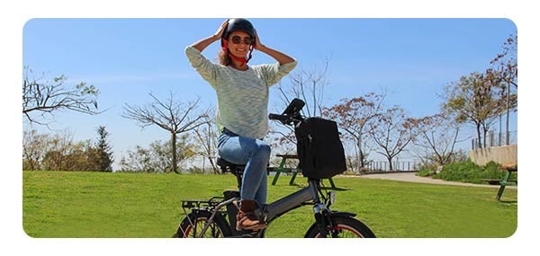
September 4
Personal Injury
The Rise of E-Bikes: What You Need to Know Before Hitting the Road
E-bikes, or electric bicycles, are rapidly becoming a popular mode of transportation and recreation across the United States. Combining the convenience of a traditional bicycle with the added power of an electric motor, e-bikes offer a unique and accessible way to travel. But what exactly is an e-bike? How does it differ from other motorized bikes? And what do riders need to know before sharing the road with cars?
What is an E-Bike?
An e-bike is a bicycle equipped with an electric motor that assists the rider’s pedaling. This motor can either provide power to help with pedaling (pedal-assist) or, in some cases, propel the bike without any pedaling (throttle). E-bikes typically have a rechargeable battery that powers the motor, allowing riders to travel longer distances and tackle hills with ease.
There are three main classes of e-bikes:
- Class 1: Pedal-assist only, with no throttle, and a maximum assisted speed of 20 mph.
- Class 2: Pedal-assist and throttle, with a maximum speed of 20 mph.
- Class 3: Pedal-assist only, with no throttle, and a maximum assisted speed of 28 mph.
What Sets E-Bikes Apart from Other Motorized Bikes?
E-bikes differ from other motorized bikes, such as scooters and motorcycles, in several key ways:
- Pedal-Assist Feature: Unlike motorcycles and scooters, most e-bikes require the rider to pedal in order to engage the motor. This makes them more akin to traditional bicycles than fully motorized vehicles.
- Speed and Power: E-bikes are generally less powerful and slower than motorcycles and scooters. The maximum speed for most e-bikes is 20-28 mph, whereas motorcycles and scooters can easily exceed these speeds.
- Legality and Accessibility: E-bikes are often subject to different regulations than other motorized bikes, making them more accessible in terms of where they can be ridden. In many places, e-bikes can be used in bike lanes and on bike paths, unlike motorcycles or scooters.
What E-Bike Riders Need to Know Before Hitting the Road
Before taking your e-bike for a spin, there are several important factors to consider, especially when sharing the road with cars:
- Understand Your E-Bike Class: Knowing which class of e-bike you have is crucial, as it determines where you can ride and how fast you can go.
- Familiarize Yourself with Local Laws: E-bike regulations can vary significantly from state to state, and even city to city. Some areas may require helmets, impose age restrictions, or prohibit e-bikes on certain roads or bike paths.
- Stay Visible: When sharing the road with cars, visibility is key. Wear bright clothing, use lights, and make sure your bike has reflective materials.
- Practice Defensive Riding: Assume drivers may not see you, and be prepared to take evasive action. Keep a safe distance from cars, avoid riding in blind spots, and be cautious at intersections.
- Use Proper Signaling: Just like with a traditional bicycle, it’s important to signal your turns and stops to alert drivers of your intentions.
- Check Your Battery: Before heading out, make sure your e-bike’s battery is fully charged. Running out of power mid-ride can leave you stranded or make it difficult to keep up with traffic.
Federal vs. State Regulations: What You Need to Know
In the United States, the regulation of e-bikes is somewhat of a patchwork, with both federal and state laws playing a role.
- Federal Regulations: At the federal level, the Consumer Product Safety Commission (CPSC) classifies e-bikes as bicycles as long as they meet certain criteria: a maximum motor power of 750 watts (1 horsepower) and a top speed of 20 mph with motor assistance. This classification means that e-bikes are not subject to the same regulations as motor vehicles, such as licensing or registration requirements.
State and Local Regulations: While federal law provides a general framework, states have the authority to establish their own regulations regarding e-bike use. This can include rules about where e-bikes can be ridden, helmet requirements, age restrictions, and more.
